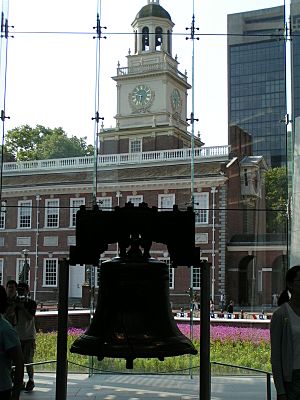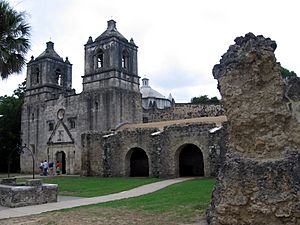National Historic Site (United States) facts for kids

A National Historic Site (often called NHS) is a special place in the United States that has been officially recognized as very important to the nation's history. Usually, an NHS focuses on one main historical thing, like a building or a small area, that is directly connected to its story.
A similar but different type of place is a National Historical Park (NHP). These parks are usually larger than a single building or property. They often include a mix of old historic structures, newer buildings, and sometimes even important natural areas.
As of 2020, there are 58 National Historical Parks and 89 National Historic Sites. Most of these places are managed by the National Park Service (NPS). Some sites are owned by local groups or private people, but they can still ask the NPS for help. One special place, Grey Towers National Historic Site, is managed by the U.S. Forest Service.
Since October 15, 1966, all historic areas managed by the NPS, including NHPs and NHSs, are automatically listed on the National Register of Historic Places (NRHP). There are about 90,000 places on the NRHP, but most of them are not owned or managed by the NPS. About 2,500 of these places have an even higher status as National Historic Landmark (NHL) sites.
Contents
What are National Historic Sites?

National Historic Sites are usually owned and run by the U.S. government. However, some are still owned by private groups or local governments. Right now, there are 89 National Historic Sites. Out of these, 77 are official parts of the NPS. Eleven are connected to the NPS but managed by others, and one is managed by the U.S. Forest Service.
Many NHSs were created based on the Historic Sites Act of 1935. Some were set up by the United States Secretary of the Interior, but most were approved by Congress. The very first NHS was created in 1937 in Salem, Massachusetts. Its goal was to protect and share the history of sailing and ships in New England and the United States.
There is also one International Historic Site in the U.S. park system. This special name was given to Saint Croix Island in Maine, which is right next to the New Brunswick border. This site was the first permanent French settlement in America. Its special title shows how important it was to both Canada and the United States. The NPS treats these sites the same way when it comes to protecting and managing them.

What are National Historical Parks?

In the United States, places are called "historic," while parks are called "historical." The NPS explains this difference. A "site" can be historic on its own because it's an old place. But a "park" is a modern legal idea. So, a park itself isn't "historic," but it can be called "historical" because it contains historic things. It's the old buildings or features inside the park that are historic, not the park itself.
The Klondike Gold Rush International Historical Park was officially created in 1998. This happened in the same year as the 100th anniversary of the gold rush it remembers. This park includes the Klondike Gold Rush National Historical Park in Washington and Alaska. It also includes the Chilkoot Trail National Historic Site in British Columbia, Canada. Many gold seekers used this trail hoping to find riches in the Klondike River area of Yukon.
Images for kids
-
Salem Maritime National Historic Site was the first National Historic Site to be established in the U.S.
See also
 In Spanish: Parque histórico nacional para niños
In Spanish: Parque histórico nacional para niños


